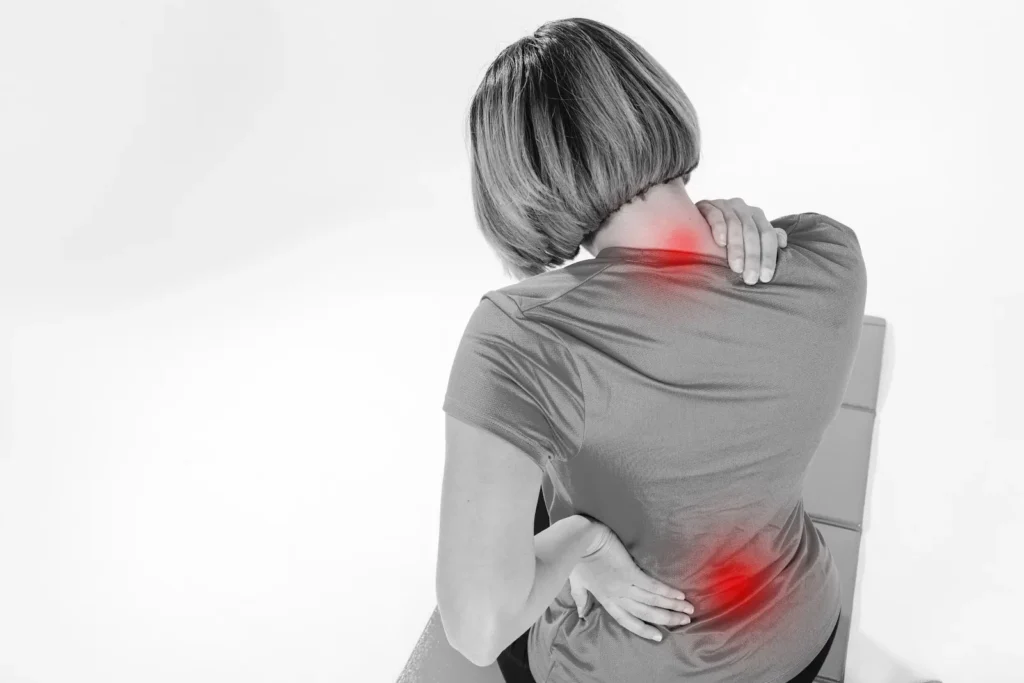Back discomfort affects over one-third of persons over the age of 40, many of which are chronic. Although there are different forms of back pain, sciatica is one of the most prevalent. Learn more about the warning signs and symptoms of pain so you can get assistance more quickly.
The section below this one has further information on common back discomfort that travels down your legs. Additionally, what you may do if you believe you are affected by it. A person might use Prosoma 500 while addressing this problem to go back to their regular routine.
What is Sciatica and how ensures it distress you?
Sciatica is a kind of back and leg pain that affects the gluteal region or the buttocks and is brought on by irritation or damage to the sciatic nerve. It may be really uncomfortable. The sciatic nerve, which runs down the back of the leg, is the longest and thickest nerve in the human body.
Two originate from the lower back’s lumbar spine. And the last three come from the sacrum, the final segment of the spinal column. Five nerve roots come together to generate the right and left sciatic nerves.
One sciatic nerve normally travels down each side of your body, going through your hips, buttocks, and leg before coming to an end right below the knee on either side. Agony is caused by the sciatic nerve branching as it travels down your leg and into your toes.
What does it feel like to have Sciatica?
Depending on the underlying etiology, sciatica pain may be described in a number of different ways. Many patients have described their pain as being sharp, shooting, or jolting. Some people call this sensation “searing” or “electric.” It could occur often or seldom.
Lower back discomfort is typically less severe than leg pain. Long lengths of time spent sitting, standing, or rotating your upper body may make the discomfort worse. Coughing, for example, might cause a rapid, powerful bodily movement that exacerbates the discomfort. Since Kamagra oral jelly is a middle-dose, doctors like it.
What Are the Treatment Options for Sciatica?
When treating chronic back pain, especially sciatica, we may not always be lowering vertebral flattening. rather, the signs and pain that go along with it.
By altering their body mechanics, whether via physical therapy, diet, or other methods, some individuals may experience less pain. Physical therapy is the least intrusive treatment option available at APC.
According to their pain history, present symptoms, and pathology, among other factors, each patient needs a unique treatment plan.
To reduce inflammation and discomfort. First, we’ll use painkillers like prosoma 350 mg, as well as heat, cold, rest, and physical therapy. Before coming to us, the majority of our Sciatica sufferers had exhausted all other options. Whether it was at home, with their family doctor, or with other professionals.
If the patient has had treatment but still does not fully comprehend the damage. We’ll place an imaging order first. Then, we individually adapt each patient’s therapy to meet their needs:
- A more specialized program may be available to those who have already had physical therapy after obtaining an MRI to help us better understand their injury.
- Due to their lack of participation in “conservative” treatment, such as taking an Ibuprofen or Aleve and then stopping, we may need to put them on a more consistent therapy plan.
- Oral steroids, the most effective anti-inflammatories, may be used if physical therapy is unsuccessful. Sometimes, just that is all they need to do to reduce inflammation.
- We will turn to an epidural steroid injection if all else fails.
An X-ray is used to guide a needle into the patient’s epidural area in order to provide an epidural steroid injection. Pinch or swell the nerve where it is. To reduce inflammation and relieve pain, a little dose of steroids will be injected into their bodies.
After having this injection, our patients reported feeling a considerable reduction in their symptoms. Which is fantastic news given the minimally invasive approach needed to get results. The patient’s pathology also influences the patient’s treatment plan.
As opposed to someone who may find it more challenging to get long-term pain relief if they have a lengthy history of chronic back pain. A patient who has just suffered an injury is more likely to recover quickly and not need further care.
How can you be sure you don’t have Sciatica if you suspect it?
A burning sensation in your calf is most likely the result of a nerve problem. Numbness or paresthesias, which provide a tingling feeling on the skin, are signs that a nerve-related issue exists.
If you think you may be suffering from sciatica or another kind of nerve injury. To verify if you are correct, do this easy test. A positive straight leg lift is what it is known as:
- Take a bed and nap.
- Turn around and look in the other way.
- Ensure that your legs are straight but not rigid.
- Lift one leg off the mattress slowly, being mindful of your back and leg.
By employing this physical examination finding, you are exerting pressure on the sciatic nerve. This tugs at the source of the pain. This technique does not identify the precise site of the inflamed nerve, which is a drawback. An thorough physical examination and an MRI are needed to determine the entire degree of the inflammatory or damaging situation.
